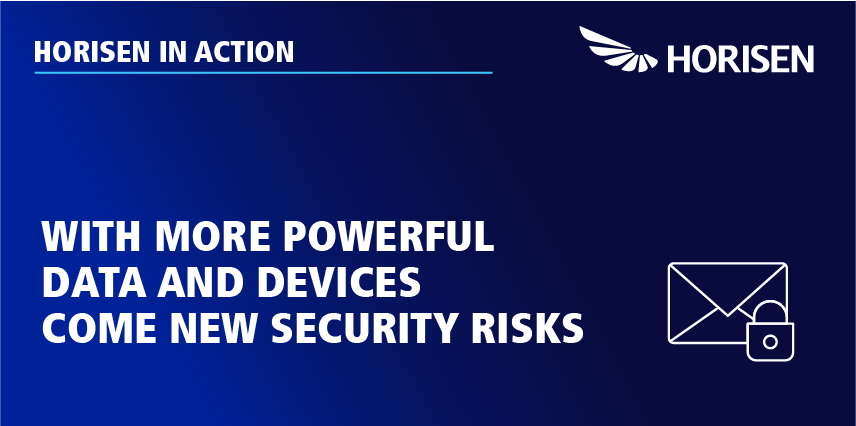The state of digital transformation projects is akin to a long train.
Some businesses are at the front in first class and driver’s seat, pouring money into audacious projects and paving the path for others to follow.
Meanwhile, others arrived late to the departure lounge and are now chasing down the train, hoping not to miss out on further business.
Yet, most are in second class, unable to scramble the resources to join those at the front.
Here, these “second class” passengers play a constant game of catch-me-up – hoping not to get dumped off at the next station.
In telco, those stations are plentiful, especially with the rapid rollout of 5G, full fibre connectivity, and growth of cloud infrastructures.
Of course, each brings significant opportunities for economic growth. Yet, each new advancement increases the proliferation of devices and data flow, bringing unknown risks.
For instance, with the transition to cloud-native architectures, the attack surface for threat actors has evolved and expanded.
As such, the ease of replicating telecom networks has lowered the barrier to entry for threat actors, making it imperative for telecom companies to review and address new security challenges.
Messaging Vulnerabilities Are a Significant Security Challenge
Messaging vulnerabilities are a substantial risk telcos face, affecting even the most mighty brands.
In 2017, Verizon had a vulnerability allowing potential cross-site scripting (XSS) attacks through SMS.
Exploiting this flaw, attackers took complete control of a victim’s SMS session before intercepting and sending text messages on their behalf.
More recently, Vonage and Twilio – which provide the link between telecom networks and the internet – allowed customers to send SMS messages, including sender IDs (i.e., shortened business names), without making adequate checks that the tech wouldn’t be used in scams.
As a result, Vonage alone enabled the sending of 11,780 non-compliant SMS messages.
These examples alone highlight the necessity for a modern, automated, and scalable approach to security as digital transformation projects accelerate.
Indeed, telcos and service providers that prioritize security will place at the top of the list for enterprises seeking partners for their digital transformation programs.
5 Opportunities to Mitigate Such Security Challenges
As telcos get to grips with messaging vulnerabilities and other emerging security challenges, they have recognized several opportunities to quell such concerns. Here are five excellent examples:
- Adopt a Zero-Trust Approach – A “zero-trust” approach avoids assuming trust in any component, system, or network, and implementing rigorous testing and certification for partner solutions.
- Integrate Additional Security Measures Into the DevOps Cycle – Telecom companies should “shift left” in their security approach and integrate security measures into the development lifecycle. That involves proactive testing and vulnerability correction before they reach the production stage.
- Take Precautions with IoT and Smart Devices – Carefully consider the certification requirements for the numerous IoT, OT, and other smart devices operating on telecom networks. Attackers often probe these for vulnerabilities.
- See Security as a Team Sport – Security is a collaborative effort involving coordination between parties. That includes security and IT teams working together, integrating security into business requirements, and thoroughly vetting supplier solutions.
- Create a Shared Responsibility Model – Different suppliers bring different focuses and capabilities. Recognizing this, some telcos have built a shared responsibility model, ensuring cloud service providers and customers understand their respective responsibilities in ensuring security.
Not All Providers of Secure Solutions Are Equal
Much of the advice above revolves around the principle that suppliers must become more collaborative with telcos and adopt the highest security standards.
After all, as new devices emerge, data sets swell, and digital transformation activities accelerate, more challenges will come to the fore.
Messaging vulnerabilities are a critical example, especially as the number of communications channels they support climbs higher.
Thankfully, HORISEN offers telcos messaging technology they can trust, allowing them to provide customers with secure messaging services.
Moreover, the CPaaS enabler empowers them to manage the entire messaging business from a robust, reliable platform that is continuously monitored for possible vulnerabilities.
It also meets the highest security standards, boasting the following features:
- GDPR compliance
- Data is hosted in a HORISEN cloud environment in Switzerland
- Servers are collocated in bank-certified data centers
- State-of-the-art layered security measures applied to protect the platform
- Redundant DDoS Protection on ISPs level (to receive only cleaned IP traffic)
- Connections are restricted by IP address, with only trusted IPs allowed
- VPN connectivity available on request
- IPSec and TLS connections for customers as a security best practice
Unfortunately, such safeguards are not a given across the industry. As such, telcos must remain astute and adopt that mission-critical zero-trust approach.







